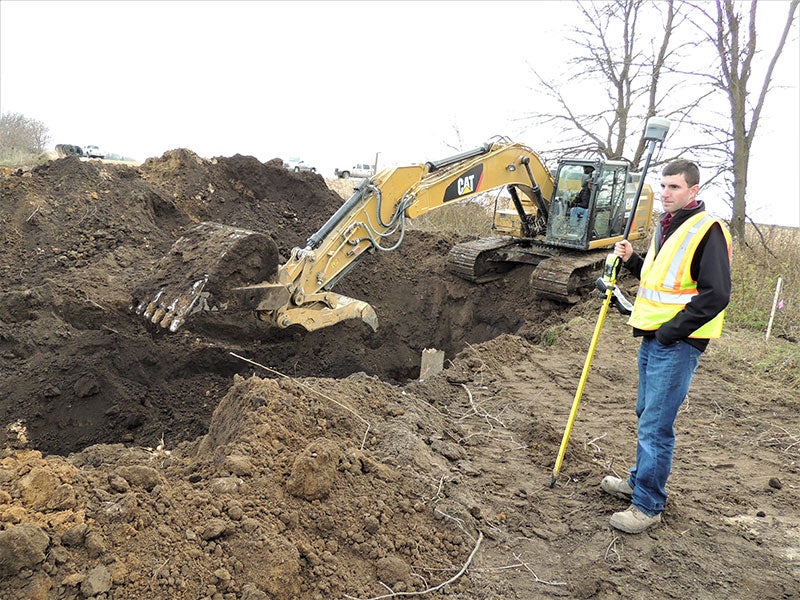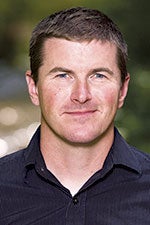Open house a great chance to give input on Cedar
Published 8:00 am Thursday, May 25, 2017

- Cedar River Watershed District project manager Cody Fox supervises a construction project last fall along the North Branch of Dobbins Creek in Red Rock Township aimed at improving water quality and reducing floodwater. Photo provided
Changes are coming to how we manage our water resources in the Cedar River Watershed in Minnesota.
Your input is vital to this effort under a new initiative known as the Cedar River One Watershed, One Plan (1W1P).
On Thursday, June 1, the public is invited to an open-house kickoff for the Cedar River 1W1P initiative at Jay C. Hormel Nature Center’s Ruby Rupner Auditorium in Austin. Attendees will have the chance to provide input and learn more about the Cedar River Watershed, which includes subwatersheds, such as Turtle Creek, Dobbins Creek and the Little Cedar River.

Justin Hanson is the district manager of the Mower Soil & Water Conservation District and the administrator of the Cedar River Watershed District
Cedar River Watershed District and other local government units along with state agencies will have informational booths at the event.
A main presentation will be given twice — at 4:30 p.m. and 6 p.m. — during the kickoff, including Adam King, district manager for Dodge Soil & Water Conservation District, and I talking about the Cedar River Watershed and Cedar River 1W1P. State officials also will present, including showing a video of a Google Earth flyover of the Cedar River.
While coming out for the kickoff, you also can check out the nature center’s beautiful, new interpretive center until 5 p.m. just across the parking lot from Ruby Rupner Auditorium.
With your help, we hope to make this initiative a benchmark for the Cedar River Watershed and the community that embraces it. As we set our goals and strategies for the next 10 years through the 1W1P process, we want the public to share their experiences, values and ideas for improving the resource work in the watershed.
Cedar River 1W1P is a new effort that’s part of a broader One Watershed, One Plan program led and funded by the state’s Board of Water & Soil Resources to get water planning based around watershed boundaries rather than political boundaries (county lines).
In the past, planning was done at various levels of government, creating separate, individual water plans for counties; soil and water conservation districts; and watershed districts. This approach was fine for awhile as those plans were very local and reflective of their communities. With planning restrained to political boundaries, however, this led to different entities working hard to accomplish water goals, but not necessarily working together within a watershed.
With the June 1 event, we want to engage citizens who live or work in the watershed and value its resources. Public input is the first step in a series of discussions that will help us shape a 10-year plan of work for the Cedar River Watershed — an area that goes beyond the boundaries of the Cedar River Watershed District.
More than 10 years ago, locals met to discuss the framework of a new generation of water management in the Cedar River community. This work launched the Cedar River Watershed District in 2007. That led to the area’s stakeholders starting their first discussions of a 10-year work plan to identify watershed priorities and frame a strategic funding plan for projects.
It worked. Since then, there have been millions of grant dollars leveraged in the Cedar River Watershed for projects that help manage water in ways that reduce flooding and improve water quality.
Now it’s time for the next generation of water management.
For the first time, community members and agency staff will work in an expanded effort for the good of our local resources. All of us are agreeing to work together to develop the best possible plan that prioritizes work across the entire watershed.
To do this, we are partnering with county and SWCD staff from Dodge, Freeborn, Steele and Mower counties; the Cedar River and Turtle Creek watershed districts; and the city of Austin.
The Cedar River is a local gem, and I’m lucky to work in an area that recognizes its value and supports investments to protect and improve it. There is a lot of work to do over the next several months but I’m looking forward important to working with citizens and partnering agencies on creating a quality plan.
Please visit us June 1 at the nature center to share your story and opinions to help us in our planning efforts for the Cedar River Watershed.
Mower SWCD provides technical assistance to landowners with conservation practices that protect land and water resources. SWCD also performs the duties of the Cedar River Watershed District to improve water quality and reduce flooding. This monthly column by Mower SWCD/CRWD typically runs the last Thursday of each month. More information is available on the Mower SWCD and CRWD websites as well as the CRWD’s Facebook page: www.facebook.com/CedarRiverWD. Questions and comments can be sent to tim.ruzek@mowerswcd.org.


